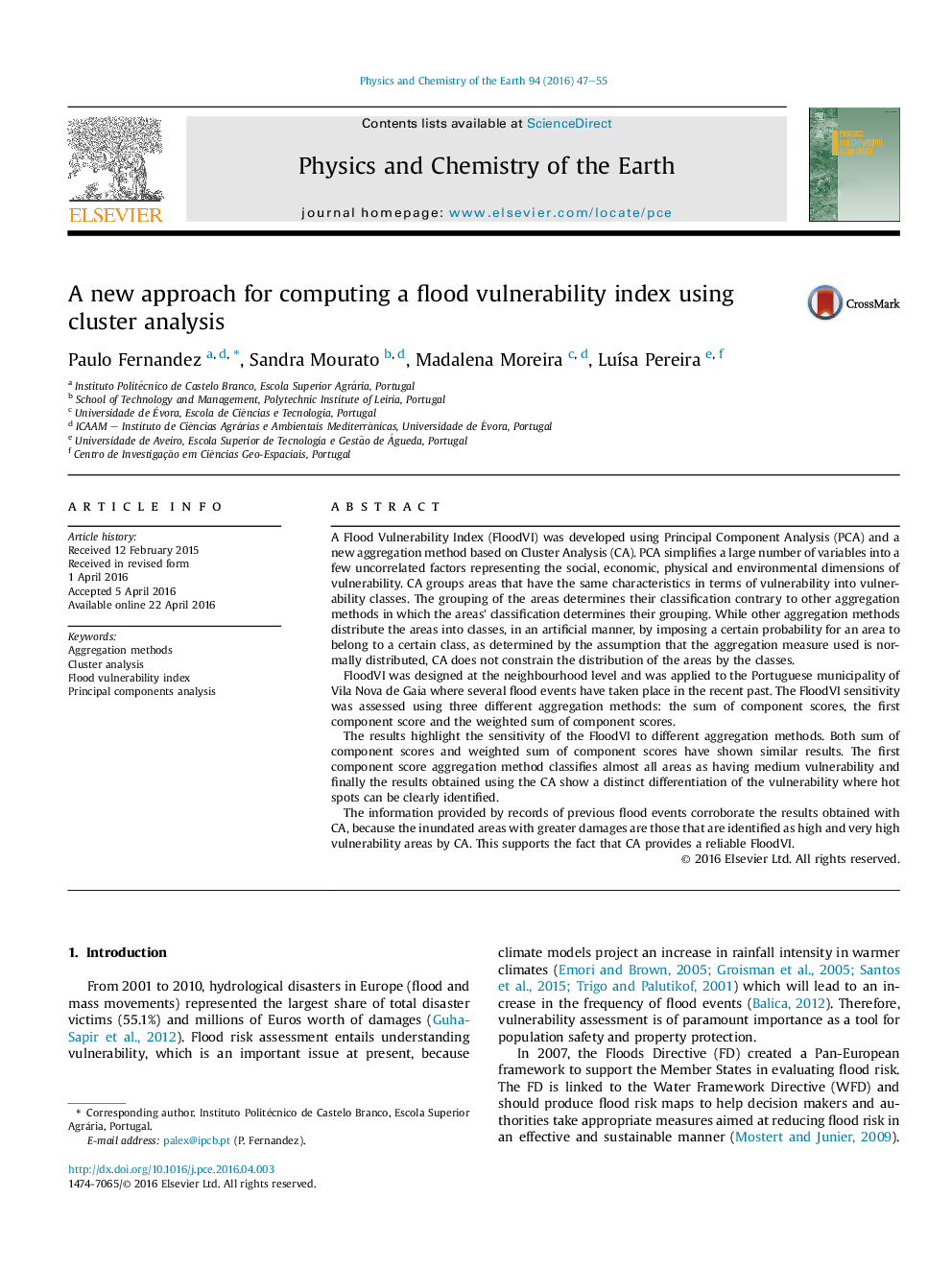| Article ID | Journal | Published Year | Pages | File Type |
|---|---|---|---|---|
| 4720820 | Physics and Chemistry of the Earth, Parts A/B/C | 2016 | 9 Pages |
•We built a flood vulnerability index throughout Principal Component Analysis.•We propose a new aggregation scheme based on cluster analyses.•We used a detailed analysis scale with a large number of vulnerability dimensions.•Sum of components and the weighted sum of components methods showed similar results.•Cluster aggregation method proved to be a strong method to detect hot spots.
A Flood Vulnerability Index (FloodVI) was developed using Principal Component Analysis (PCA) and a new aggregation method based on Cluster Analysis (CA). PCA simplifies a large number of variables into a few uncorrelated factors representing the social, economic, physical and environmental dimensions of vulnerability. CA groups areas that have the same characteristics in terms of vulnerability into vulnerability classes. The grouping of the areas determines their classification contrary to other aggregation methods in which the areas' classification determines their grouping. While other aggregation methods distribute the areas into classes, in an artificial manner, by imposing a certain probability for an area to belong to a certain class, as determined by the assumption that the aggregation measure used is normally distributed, CA does not constrain the distribution of the areas by the classes.FloodVI was designed at the neighbourhood level and was applied to the Portuguese municipality of Vila Nova de Gaia where several flood events have taken place in the recent past. The FloodVI sensitivity was assessed using three different aggregation methods: the sum of component scores, the first component score and the weighted sum of component scores.The results highlight the sensitivity of the FloodVI to different aggregation methods. Both sum of component scores and weighted sum of component scores have shown similar results. The first component score aggregation method classifies almost all areas as having medium vulnerability and finally the results obtained using the CA show a distinct differentiation of the vulnerability where hot spots can be clearly identified.The information provided by records of previous flood events corroborate the results obtained with CA, because the inundated areas with greater damages are those that are identified as high and very high vulnerability areas by CA. This supports the fact that CA provides a reliable FloodVI.
